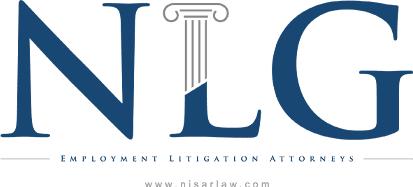
Discrimination
Fighting For Your Best Interest
Discrimination in the Workplace
New York employment attorney – (646) 760-6493
Workplace discrimination is a sensitive issue to American workers from all economic strata and social backgrounds. Many employees are mistreated or discriminated against in the workplace, and many are made to endure unjust treatment by their employers. Whether you work for a small business or a global corporation, you are entitled to fair and equal treatment.
Nisar Law Group, P.C. and our team of New York employment law attorneys can provide you with intelligent, strategic legal counsel if you have been discriminated against in your place of work. We have the knowledge to handle discrimination cases at every level of the business sector, including national and international matters.
Contact our firmtoday to get a better understanding of your rights and options in such a delicate legal case.
Federal and State Level Protected Classes
A protected class is any sort of characteristic or identifying factor of an individual that cannot be disrespected, disregarded, or targeted by discrimination in the workplace. Most workplaces do not need to adhere to protected class regulations as long as 14 or less employees hold occupation there.
Federal protected classes include:
- Race
- Color
- Nationality
- Religion
- Sex
- Pregnancy
- Disability
- Age – applies to 40 years or older
- Citizenship
- Genetic information
New York State also recognizes the following as protected classes:
- Marital status
- Sexual orientation or preference
- Military service or history
- Political affiliation
- Service dog necessitation
- Criminal accusations
- Victim of domestic violence
- Sabbath observance
- Participation in any lawful activity outside work
- Familial Status
- Gender Identity
- Prior arrests
What Employers Are Required to Comply with Anti-discrimination Laws?
Any employers that have 15 employees or more are under federal anti-discrimination laws excluding age discrimination (needs 20 employees or more), discrimination because of citizenship status (needs 4 employees or more) and equal pay between women and men (any number of employees). The state of New York’s anti-discrimination law includes any employers that have four or more employees.
If you have been discriminated against, you can call the Equal Employment Opportunity Commission (EEOC) that regulates discrimination in the workplace. This is the federal agency that handles workplace discrimination and the Division of Human Rights enforces the anti-discrimination law within the state of New York.
Potential Forms of Discrimination
New York employment discrimination law defines workplace discrimination as any special or unique treatment given, or not given, to an employee based on a protected class. For example, it would be unlawful to fire – or not hire – an applicant merely because he/she was 41 years old.
Actions that could potentially lead to a discrimination lawsuit include:
- Hiring or firing an employee
- Promotions or demotions
- Raises or cost cuts
- Employee scheduling
Find an Amicable Solution Quickly – Call (646) 760-6493
Our New York employment lawyer can provide professional guidance backed by unrivaled understanding of employment law for your discrimination claim. We will explore all possible avenues to end the confrontation as smoothly as possible. In some situations, this may mean discussing negotiations or settlements. In other cases, preparing for litigation to tenaciously fight for your rights may be necessary.
Experienced discrimination in the workplace? Learn more about your options in detail during an initial case evaluation.
Why We're the Right Choice
-
Seasoned Litigators Who Have Handled Numerous Jury & Bench Trials
-
Providing Representation with Clarity, Honesty & Integrity
-
Building Long-Term Affiliations & Relationships
-
Offering Consultations for All Case Types We Handle

-
In good hands!
After 2 years of suffering abuse and discrimination by my bosses, I finally decided to trust Lawyer Nisar to help me gain justice against their abuse.
- Maria -
Able to resolve my case in just 4 months.
Great attorneys to work with. They were upfront with my scenarios and stayed on top of the matter I had with my employer.
- Lidia -
Took his time to listen to everything I had to say.
Listened to everything I had to say and then asked me questions regarding my situation. He really took his time to listen to everything I had to say.
- Bibi


